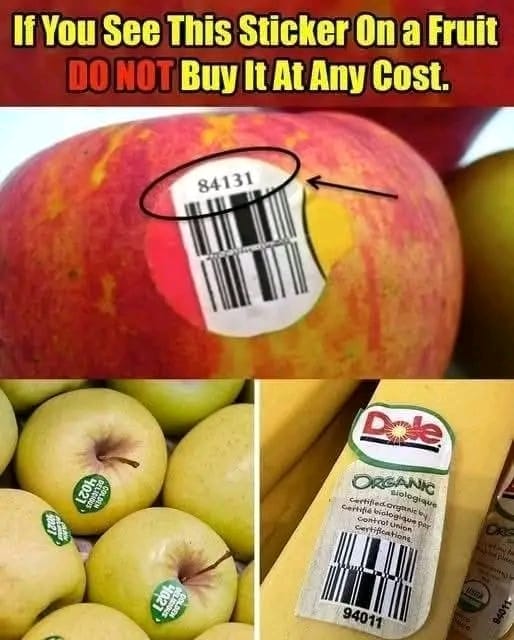ADVERTISEMENT
When you look at the strange numbers that are printed on the stickers that are placed on your fruits and veggies, have you ever pondered what they mean? In addition to being used for scanning at the checkout counter, they include a plethora of information that is beneficial to all parties involved, including customers and merchants.
Is There a Meaning Behind the PLU Code?
What exactly does the abbreviation “PLU” stand for? It is an abbreviation for “price look up,” and these codes perform just three operations that are absolutely necessary. They make it possible for grocery shops to quickly recognize the various kinds of produce that are being purchased during the checkout process, which guarantees that the appropriate price is being paid for each item. Nevertheless, the advantages do not end there. When it comes to identifying between organic and non-organic agricultural products, PLU codes are also of great use. On top of that, they assist in distinguishing between distinct types of the same fruit.
A Look at the Power of the Number Nine
There are normally at least four digits in each and every PLU code; however, the particular number is not allocated in a highly random fashion. There is a global identifier for a certain kind of fruit or vegetable, or for a size range that falls within that type of fruit or vegetable. On the other hand, when it comes to organic groceries, there is a little bit of additional magic required. Five-digit codes are used to identify organic products. These codes always start with the number “9,” and then they are followed by the well-known four-digit PLU.
The mystique around the number ‘8’
CONTINUE READING NEXT PAGE
ADVERTISEMENT
ADVERTISEMENT
Now that you’ve read this, you may be curious about the strange “8” that keeps popping up in PLU codes. When it was first introduced, this prefix was meant to be used for products that were genetically engineered, which is a rather uncommon category in the realm of fruits and vegetables. On the other hand, it would be very difficult to detect these “8” prefixed codes at retail establishments. The “8” has lost its relevance in relation to growing type as a result of the limited availability of genetically modified organisms (GMO) products. Do not, however, dismiss it as a possibility just yet; it may come into play after the four-digit codes have been exhausted.
That is to say, there is more to those small stickers that are on your vegetables than meets the eye. They serve as a short reference that will assist you in recognizing your preferred fruits and vegetables, regardless of whether or not they are organic. Furthermore, they have the potential to generate much more as the world of product continues to undergo transformations.
We are grateful to Taste of Home for supplying us with this insightful information on the world of PLU codes.
ADVERTISEMENT
ADVERTISEMENT
